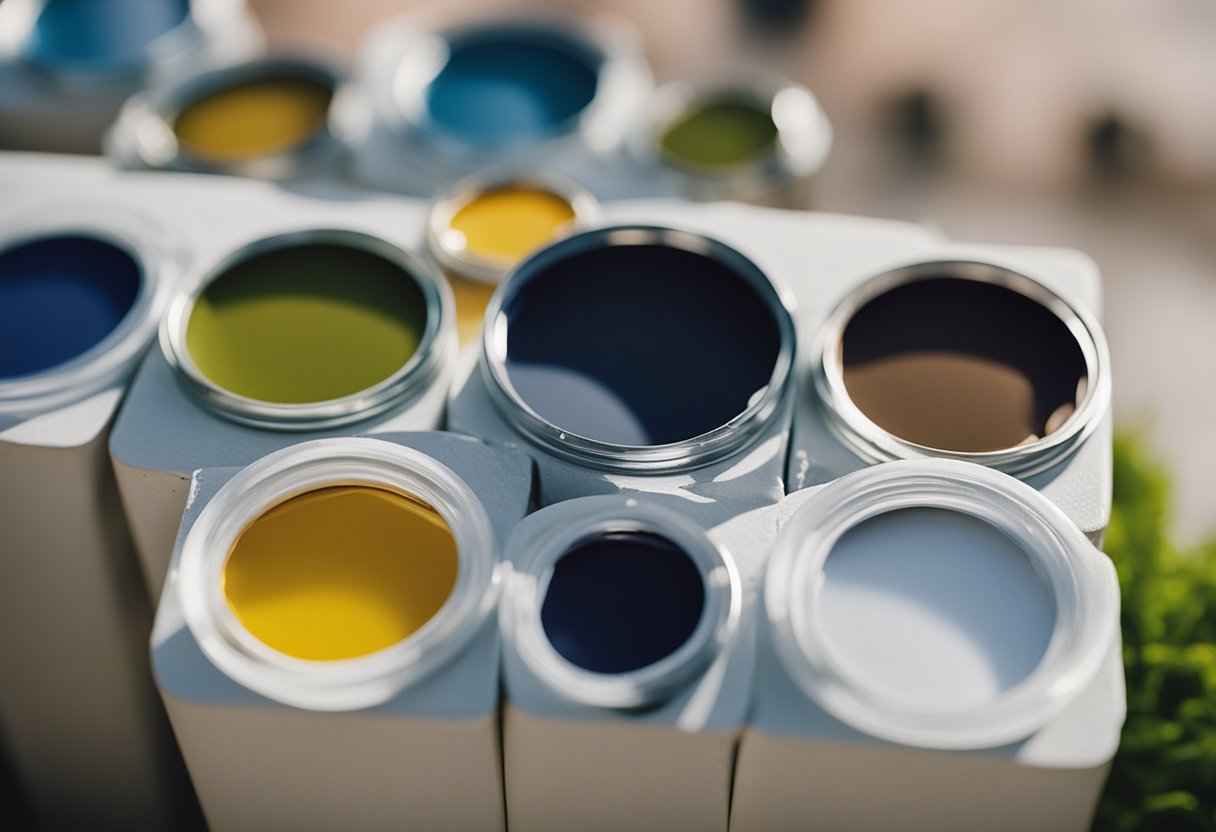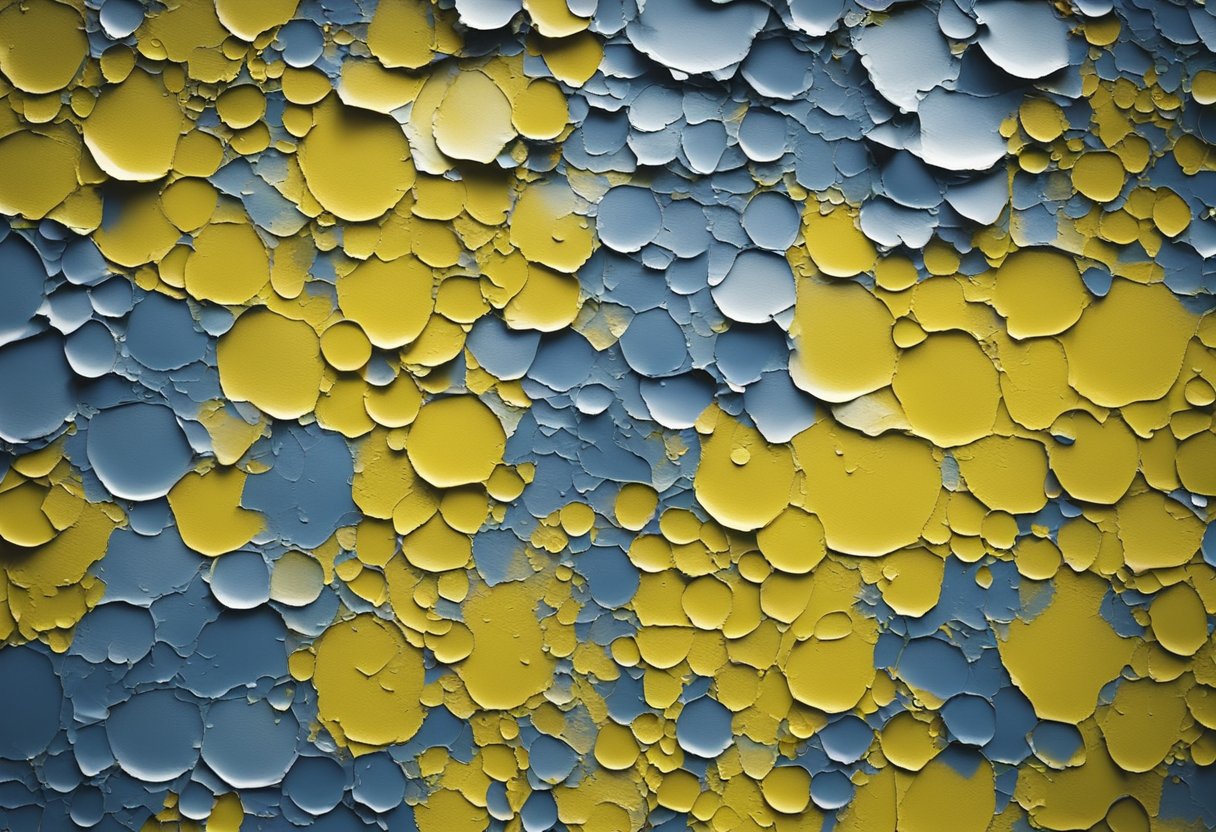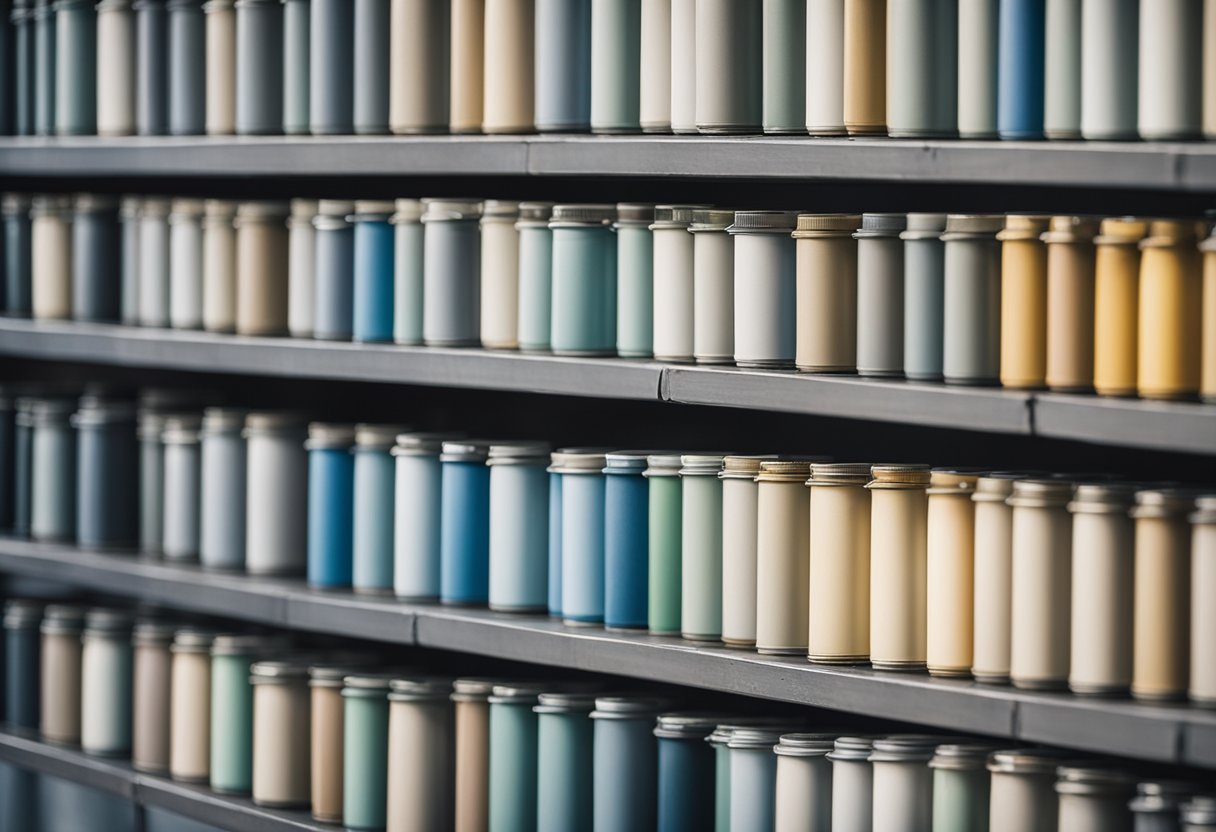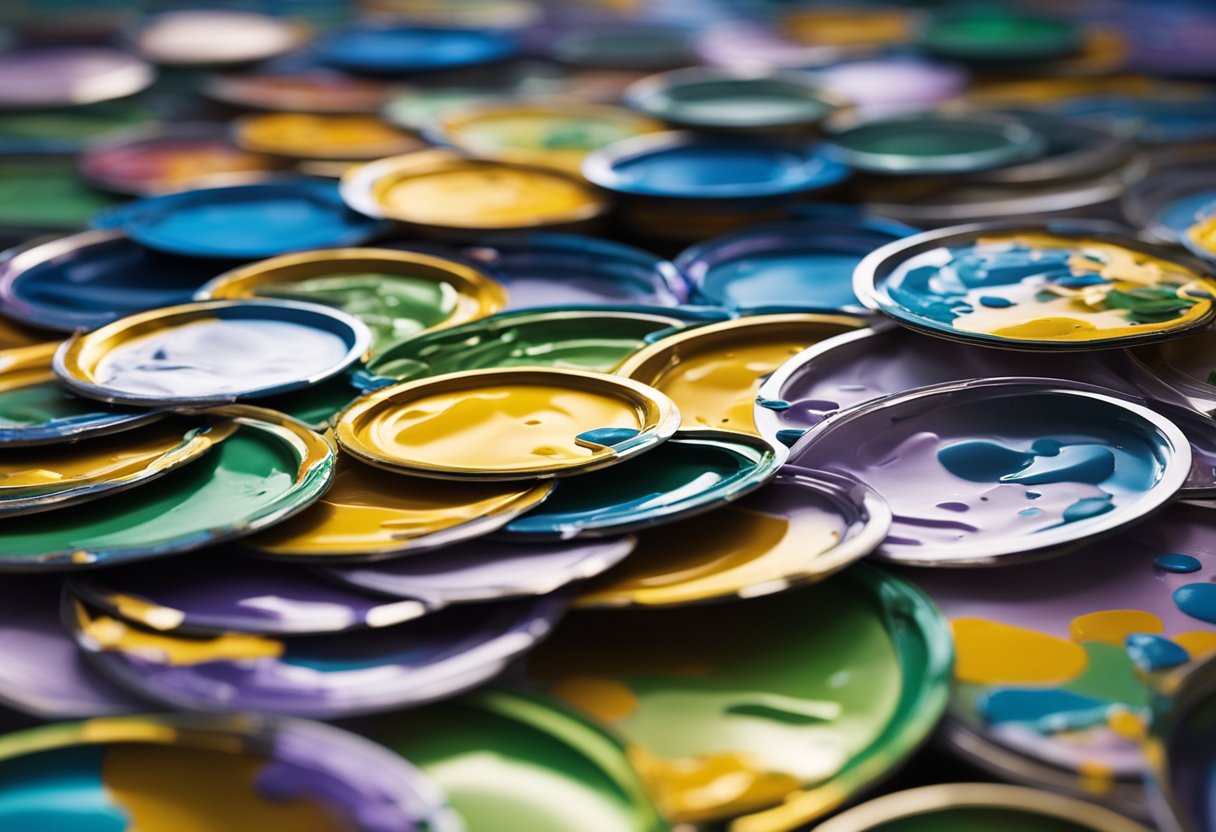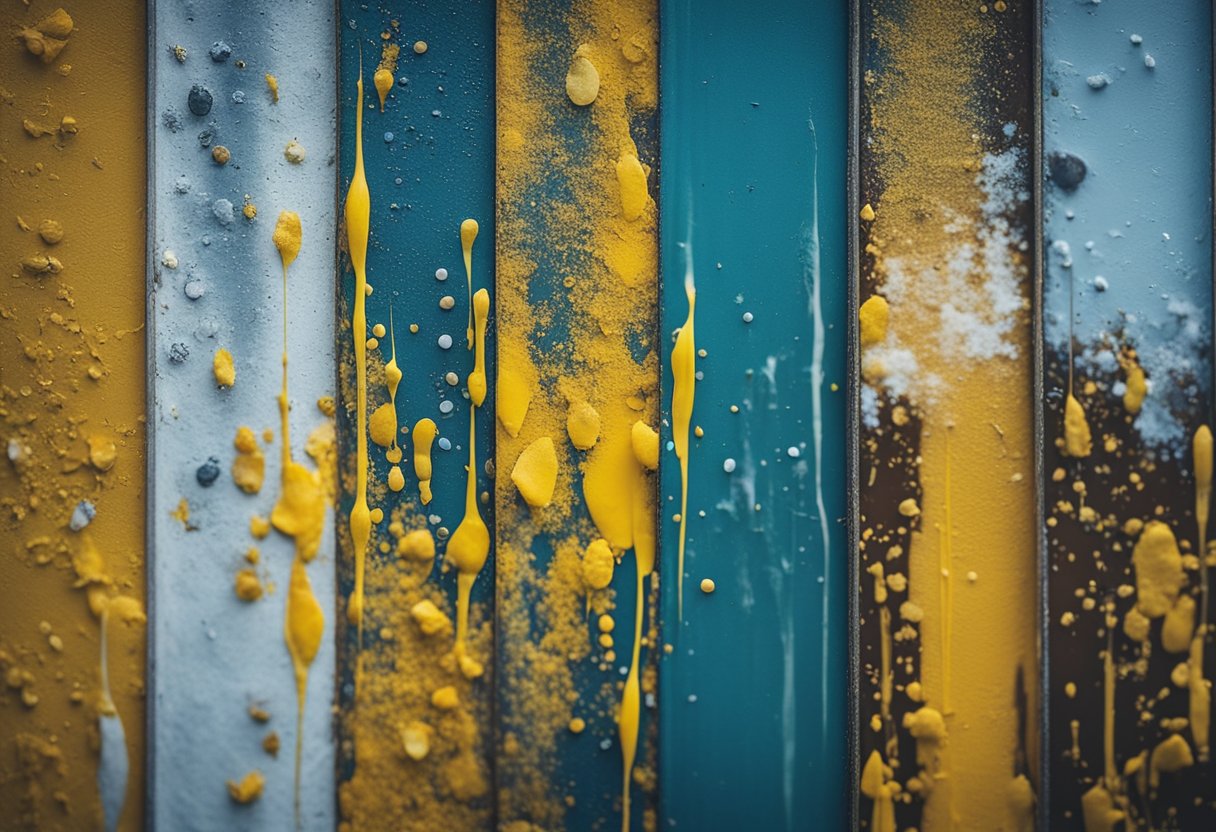I’ve done some research on the topic of “4 coats of paint and still patchy” and found some valuable information to share. Patchy paint can be frustrating, especially after applying multiple coats. It can ruin the look of a room and make all your hard work feel like a waste of time. Fortunately, there are several factors that can contribute to patchy paint, and they can all be addressed with the right techniques.
Understanding the Problem: Patchy Paint
Before we dive into the solutions, let’s first understand what causes patchy paint. The most common reason is poor coverage, which can be due to inadequate preparation, using the wrong tools, or choosing the wrong paint. Other factors that can contribute to patchy paint include environmental factors such as humidity and temperature, as well as painting techniques.
The Role of Preparation
A crucial step in preventing patchy paint is proper preparation. This includes cleaning the walls, repairing any damage, and priming the surface. Skipping any of these steps can lead to poor coverage and patchy paint. Additionally, it’s important to choose the right tools and techniques for the job. Using a high-quality paintbrush or roller and applying the paint in thin, even coats can make a big difference in the final result.
Understanding the Problem: Patchy Paint
https://www.youtube.com/watch?v=vyDmSBrTRpE&embed=true
As a professional painter, I have encountered many instances where a client complained about a patchy finish even after applying multiple coats of paint. This issue can be frustrating and time-consuming to fix, but understanding the root of the problem can help prevent it from happening in the future.
One of the main causes of a patchy finish is not applying enough coats of paint. While it may seem counterintuitive, applying too few coats can lead to uneven coverage and patchiness. As a general rule, it is recommended to apply at least two coats of paint to achieve a smooth and even finish. However, depending on the surface and the type of paint used, more coats may be necessary.
Another common cause of patchy paint is painting mistakes. These mistakes can include things like not properly preparing the surface, not using the correct type of paint, or not using the right tools. For example, using a roller that is too dry or not using a primer can lead to uneven coverage and patchiness.
It is also important to note that patchy paint can be caused by the quality of the paint itself. Using low-quality paint or paint that has been stored improperly can lead to uneven coverage and patchiness. When selecting paint, it is important to choose a high-quality brand and store it in a cool, dry place.
In conclusion, patchy paint is a common issue that can be caused by a variety of factors, including not applying enough coats of paint, painting mistakes, and using low-quality paint. By understanding the root of the problem, it is possible to prevent patchy paint and achieve a smooth and even finish.
The Role of Preparation
https://www.youtube.com/watch?v=Rk1bXo6mhAU&embed=true
As a professional painter, I have learned that the key to achieving a smooth and even paint job is proper preparation. When it comes to applying four coats of paint and still having a patchy finish, the problem can often be traced back to inadequate surface preparation.
Surface Preparation
Before applying any paint, it is essential to ensure that the surface is clean, dry, and free of any debris. This means removing any wallpaper, glue, or loose plaster and sanding down any rough spots with a sanding block and sandpaper.
If the walls are sealed or have been painted previously, it is essential to remove any gloss or sheen by sanding or using a suitable chemical remover. This will help the primer and undercoat to adhere properly to the surface, ensuring better coverage and opacity.
Primer and Undercoat
Once the surface is adequately prepared, the next step is to apply a suitable primer and undercoat. The primer helps to seal the surface, providing a smooth and even base for the topcoat to adhere to. The undercoat provides additional coverage and opacity, helping to prevent any patchiness or unevenness in the final finish.
When selecting a primer and undercoat, it is essential to choose products that are compatible with the topcoat and suitable for the surface being painted. Applying the correct amount of primer and undercoat is also crucial, as too little can result in inadequate coverage, while too much can lead to a thick and uneven finish.
In conclusion, achieving a smooth and even paint job requires proper preparation, including surface preparation and the application of a suitable primer and undercoat. By taking the time to prepare the surface correctly and selecting the right products, it is possible to achieve a flawless finish, even when applying multiple coats of paint.
Painting Techniques and Tools
https://www.youtube.com/watch?v=eofezT3QqRY&embed=true
Rollers vs Brushes
When it comes to painting, the choice between rollers and brushes can make a big difference in the quality of the finished product. Rollers are great for covering large areas quickly and efficiently, while brushes are better for getting into tight spaces and for more precise work.
Rollers are ideal for applying paint to large, flat surfaces, such as walls and ceilings. They come in a variety of sizes and can be used with different types of covers, depending on the type of paint being used. Rollers can produce a smooth, even finish, but they can also leave behind roller marks if not used properly.
Brushes are great for getting into tight spaces and for more precise work, such as trim or molding. They come in a variety of sizes and shapes, and can be made from different materials, such as natural or synthetic bristles. Brushes can produce a smooth, even finish, but they can also leave behind brush marks if not used properly.
Applying the Paint
Applying paint properly is key to achieving a smooth, even finish. Here are some tips for applying paint:
- Use a high-quality paintbrush or roller cover to prevent brush marks or roller marks.
- Apply the paint in thin, even coats. It’s better to apply several thin coats than one thick coat, which can lead to uneven coverage and paint drips.
- Wait for the first coat to dry completely before applying a second coat. This will prevent the paint from peeling or cracking.
- Use a paint additive to prevent brush marks or roller marks. These additives can help the paint flow more smoothly and evenly, resulting in a smoother finish.
By using the right tools and techniques, you can achieve a smooth, even paint job with fewer coats and less chance of uneven coverage or paint drips.
Choosing the Right Paint
https://www.youtube.com/watch?v=qJm-wBIbk1Q&embed=true
When it comes to painting your walls, choosing the right paint is crucial. The type of paint you choose can affect the durability of the finish and how easy it is to apply. In this section, I will discuss the differences between water-based and oil-based paints and help you understand sheen and opacity.
Water-Based vs Oil-Based Paints
Water-based paints, also known as latex paints, are the most popular type of paint used for interior walls. They are easy to clean up with soap and water, have a low odor, and dry quickly. Water-based paints are also more environmentally friendly than oil-based paints because they contain fewer volatile organic compounds (VOCs).
Oil-based paints, on the other hand, are more durable than water-based paints. They are ideal for high-traffic areas such as hallways and kitchens because they are more resistant to scratches and scuffs. Oil-based paints also have a smoother finish than water-based paints. However, they take longer to dry, have a strong odor, and require solvents such as mineral spirits for cleanup.
Understanding Sheen and Opacity
Sheen refers to the level of glossiness in a paint finish. There are several options available, including matte, eggshell, satin, semi-gloss, and high-gloss. Matte and eggshell finishes are ideal for hiding imperfections on walls, while semi-gloss and high-gloss finishes are better suited for high-traffic areas.
Opacity refers to how well a paint covers the surface it is applied to. A paint with high opacity will require fewer coats to achieve full coverage. Dulux Trade Diamond Matt and Dulux Trade Vinyl Matt are two popular water-based paints that offer high opacity and durability. Ben is another popular brand that offers a range of finishes, including eggshell and semi-gloss.
When choosing a paint, it is important to consider factors such as durability, sheen, and opacity. Water-based paints are ideal for most interior walls, while oil-based paints are better suited for high-traffic areas. By understanding the differences between these types of paints, you can choose the right paint for your needs.
Influence of Environmental Factors
As a professional painter, I have encountered situations where even after applying four coats of paint, the surface remains patchy. While there can be multiple reasons for this issue, one of the significant factors that affect the quality of paint coatings is the environment in which the paint is applied. In this section, I will discuss how temperature, humidity, lighting, and furniture can impact the paint’s quality and lead to patchy surfaces.
Temperature and Humidity
Temperature and humidity play a crucial role in the paint drying process. If the temperature is too low, the paint will dry slowly, leading to a longer drying time. On the other hand, if the temperature is too high, the paint will dry too quickly, leading to an uneven finish. Similarly, high humidity levels can also cause the paint to dry slowly and lead to a patchy surface. Therefore, it is essential to maintain the ideal temperature and humidity levels in the room during the painting process.
To ensure that the paint dries evenly, I always try to maintain the temperature between 50°F to 85°F and the humidity level between 40% to 70%. I also use a fan to circulate the air in the room, which helps in drying the paint faster and more evenly.
Lighting and Furniture
The lighting in the room can also impact the paint’s quality and lead to a patchy surface. If the room is poorly lit, it can be challenging to see the areas that require more paint, leading to an uneven finish. Similarly, if the furniture in the room is not moved or covered, it can obstruct the painting process and lead to an uneven finish.
To ensure that the painting process is smooth and leads to an even finish, I always make sure that the room is well-lit and furniture is either moved or covered. I also use a drop cloth to protect the floor and any other surfaces that are not being painted.
In conclusion, the environment in which the paint is applied plays a crucial role in the paint’s quality and can lead to a patchy surface if not maintained correctly. By ensuring that the temperature and humidity levels are ideal, using a fan to circulate the air, making sure the room is well-lit, and furniture is either moved or covered, I can ensure that the painting process is smooth and leads to an even finish.
Professional Help vs DIY
When it comes to painting, it can be tempting to take on the task yourself to save money. However, after applying four coats of paint and still having patchy spots, you may be wondering if it’s time to call in a professional.
One benefit of hiring a professional painter is their expertise. They have the knowledge and experience to identify the root cause of the patchiness, whether it be bumps, streaks, or bubbles, and can offer solutions to fix it. They also have access to high-quality paints and tools that may not be available to the average homeowner.
Another factor to consider is the time and effort involved. Repainting a room can be a time-consuming and labor-intensive process, especially if you have a busy schedule. Hiring a professional can save you time and allow you to focus on other tasks.
Of course, one major downside to hiring a professional is the cost. It can be more expensive than doing it yourself, especially if you have a large area to paint. However, if the patchiness is severe and requires multiple coats, it may end up costing more in the long run to do it yourself.
Ultimately, the decision to hire a professional or do it yourself comes down to your personal preference and budget. If you have the time, patience, and skill to tackle the job yourself, it can be a rewarding DIY project. However, if you want to ensure a high-quality finish and avoid the frustration of patchy spots, hiring a professional painter may be the way to go.
Conclusion
After applying four coats of paint and still experiencing patchiness on your walls, it can be frustrating and time-consuming to figure out what went wrong. However, there are several factors to consider before deciding to repaint your walls.
First and foremost, it’s essential to ensure that your walls are clean and dry before applying any paint. Any dirt, dust, or moisture can cause the paint to adhere unevenly, resulting in patchiness. Additionally, using a high-quality primer can help the paint adhere better and provide a smoother finish.
Another factor to consider is the quality of the paint you’re using. Cheaper paints may require additional coats to achieve full coverage, resulting in a patchy finish. Investing in a higher quality paint may save you time and money in the long run, as it will require fewer coats and provide better durability.
If you’ve already followed these steps and are still experiencing patchiness, it may be necessary to repaint your walls. However, before doing so, it’s essential to address any underlying issues that may have caused the patchiness in the first place. Taking the time to properly prepare your walls and invest in high-quality paint can save you time and money in the long run, while also providing a more durable and professional-looking finish.
Frequently Asked Questions
How can I fix patchy paint on my walls?
If you have applied multiple coats of paint and still see patchy areas on your walls, there are a few things you can do to fix it. One solution is to apply another coat of paint, making sure to use a consistent technique and coverage. You can also try spot painting the patchy areas, especially if you recently completed the paint job. However, if the patchiness is caused by poor prep work or a low-quality paint product, you may need to strip the paint and start over.
What causes paint to dry patchy?
Patchy paint can be caused by a variety of factors, including poor prep work, low-quality paint, and inconsistent technique. If you don’t take the time to properly prep your surface before painting, you’re setting yourself up for trouble from the start. Make sure to clean your surface thoroughly and remove any old paint or debris that could interfere with the new coat of paint. Additionally, using a low-quality paint product can result in uneven coverage and patchy areas. Finally, inconsistent technique, such as overlapping too much onto the stuff you’ve just applied as it’s beginning to dry, can result in patchy paint.
What is the best way to cover patchy walls?
The best way to cover patchy walls is to apply another coat of paint, making sure to use a consistent technique and coverage. You can also try spot painting the patchy areas, especially if you recently completed the paint job. However, if the patchiness is caused by poor prep work or a low-quality paint product, you may need to strip the paint and start over.
How can I prevent dark patches on my walls after painting?
To prevent dark patches on your walls after painting, make sure to use a high-quality paint product and a consistent technique. Additionally, make sure to properly prep your surface before painting, cleaning it thoroughly and removing any old paint or debris that could interfere with the new coat of paint. Finally, make sure to apply enough coats of paint to achieve even coverage.
Why is my painted wall blotchy?
A painted wall can be blotchy for a variety of reasons, including poor prep work, low-quality paint, and inconsistent technique. If you don’t take the time to properly prep your surface before painting, you’re setting yourself up for trouble from the start. Make sure to clean your surface thoroughly and remove any old paint or debris that could interfere with the new coat of paint. Additionally, using a low-quality paint product can result in uneven coverage and blotchy areas. Finally, inconsistent technique, such as overlapping too much onto the stuff you’ve just applied as it’s beginning to dry, can result in blotchy paint.
Is it necessary to apply more than 3 coats of paint?
The number of coats of paint you need to apply depends on a variety of factors, including the quality of the paint product, the color of the paint, and the condition of the surface you’re painting. In some cases, you may need to apply more than three coats of paint to achieve even coverage and the desired color. However, in most cases, three coats of paint should be enough to achieve the desired coverage and color.

Hi, I’m Sal Muller of Tooltrip.com. My DIY experience led me to understand essential power tools for home projects. Tooltrip.com guides enthusiasts and professionals in choosing right tools for any job. I provide concise top tool reviews for easier, efficient DIY.

